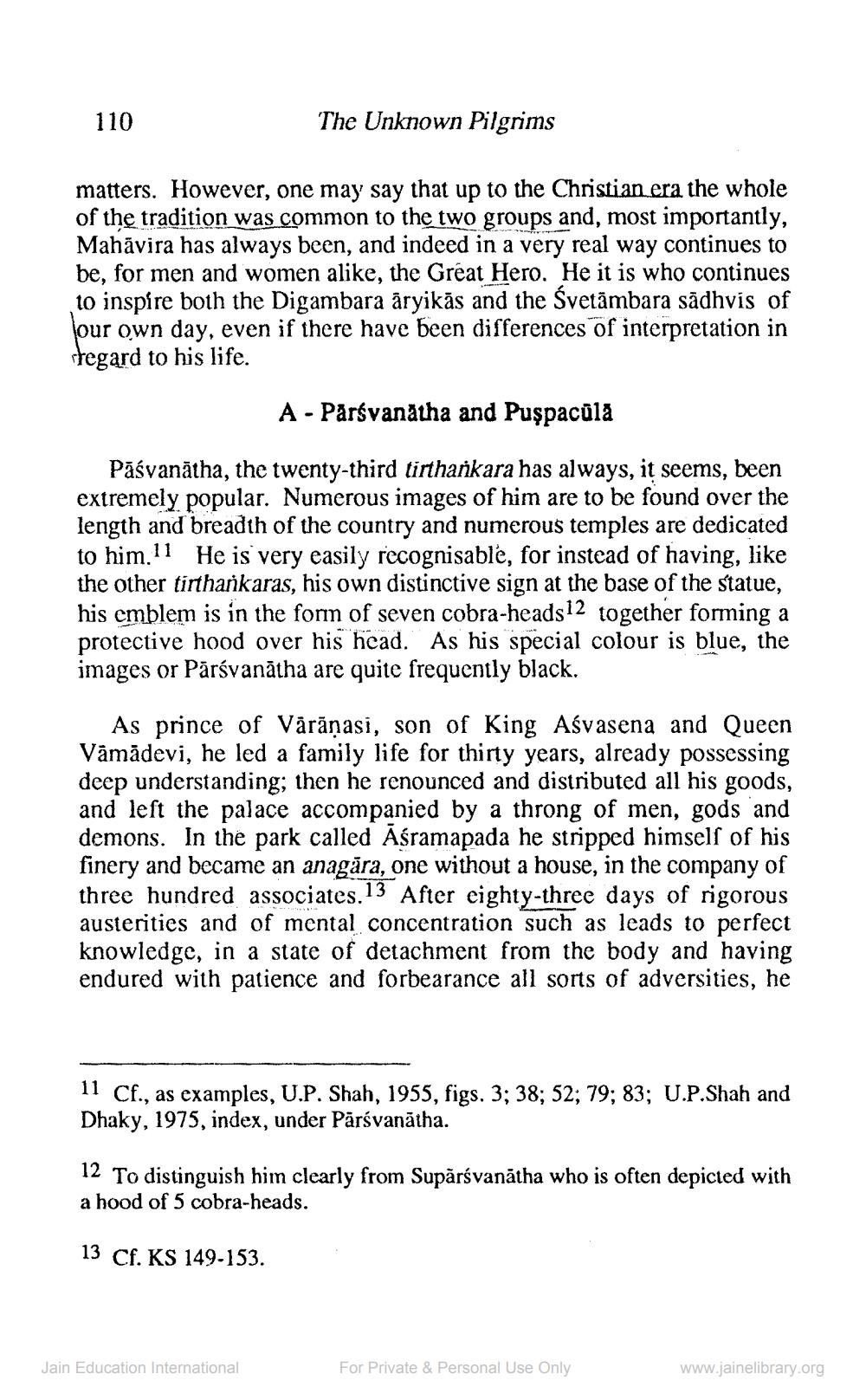________________
110
The Unknown Pilgrims
matters. However, one may say that up to the Christian era the whole of the tradition was common to the two groups and, most importantly, Mahāvira has always been, and indeed in a very real way continues to be, for men and women alike, the Great Hero. He it is who continues 10 inspire both the Digambara äryikās and the Svetāmbara sādhvis of our own day, even if there have been differences of interpretation in regard to his life.
A - Pärsvanātha and Puşpacũla
Pāśvanātha, the twenty-third tirtharkara has always, it seems, been extremely popular. Numerous images of him are to be found over the length and breadth of the country and numerous temples are dedicated to him.11 He is very easily recognisable, for instead of having, like the other tirtharikaras, his own distinctive sign at the base of the statue, his emblem is in the forn of seven cobra-heads12 together forming a protective hood over his head. As his special colour is blue, the images or Pārsvanātha are quite frequently black.
As prince of Vārānasi, son of King Aśvasena and Queen Vāmādevi, he led a family life for thirty years, already possessing deep understanding; then he renounced and distributed all his goods, and left the palace accompanied by a throng of men, gods and demons. In the park called Aśramapada he stripped himself of h finery and became an anagăra, one without a house, in the company of three hundred associates. 13 After eighty-three days of rigorous austerities and of mental concentration such as leads to perfect knowledge, in a state of detachment from the body and having endured with patience and forbearance all sorts of adversities, he
11 Cf., as examples, U.P. Shah, 1955, figs. 3; 38; 52; 79; 83; U.P.Shah and Dhaky, 1975, index, under Pārsvanātha.
12 To distinguish him clearly from Supărávanātha who is often depicted with a hood of 5 cobra-heads.
13 Cf. KS 149-153.
Jain Education International
For Private & Personal Use Only
www.jainelibrary.org




